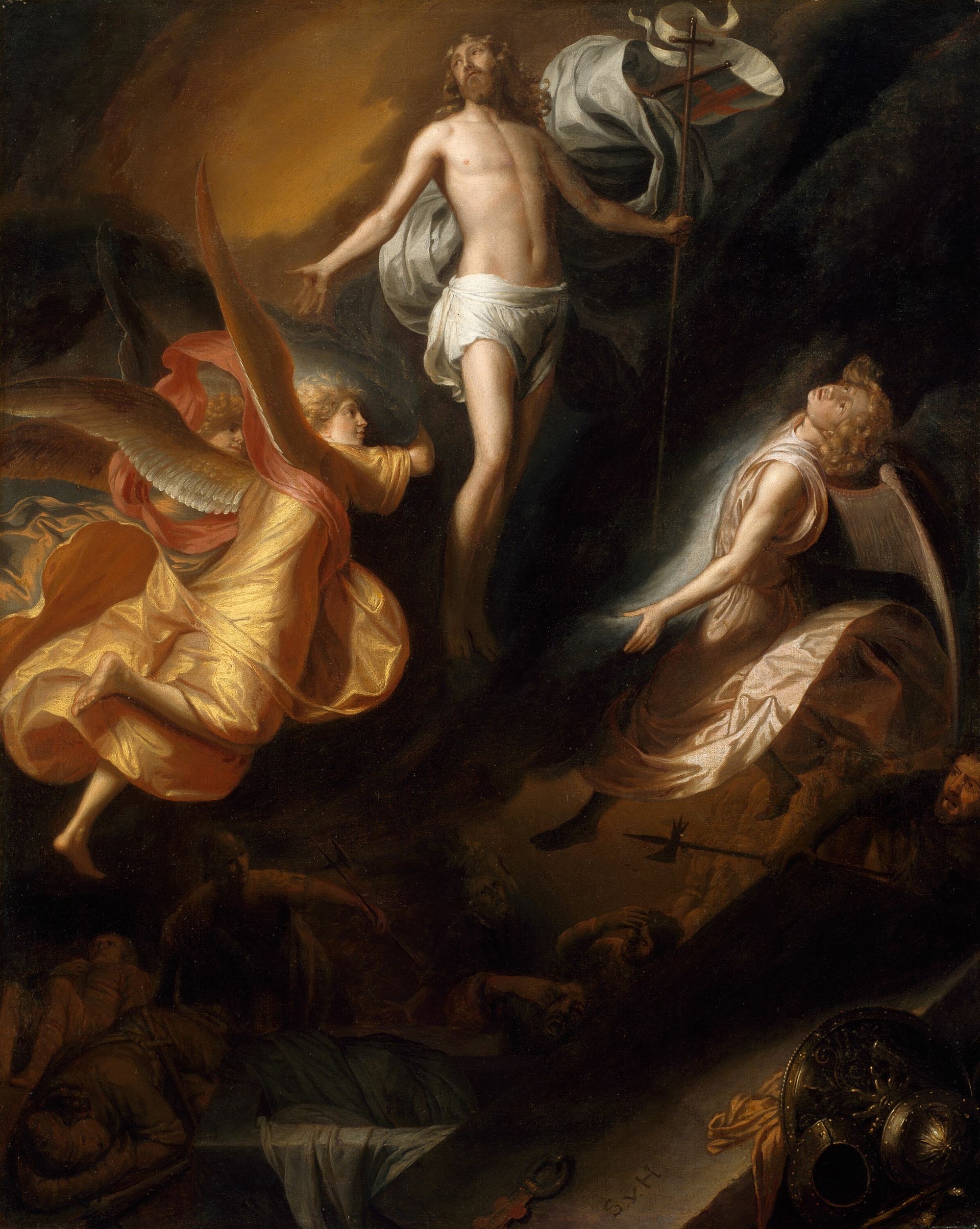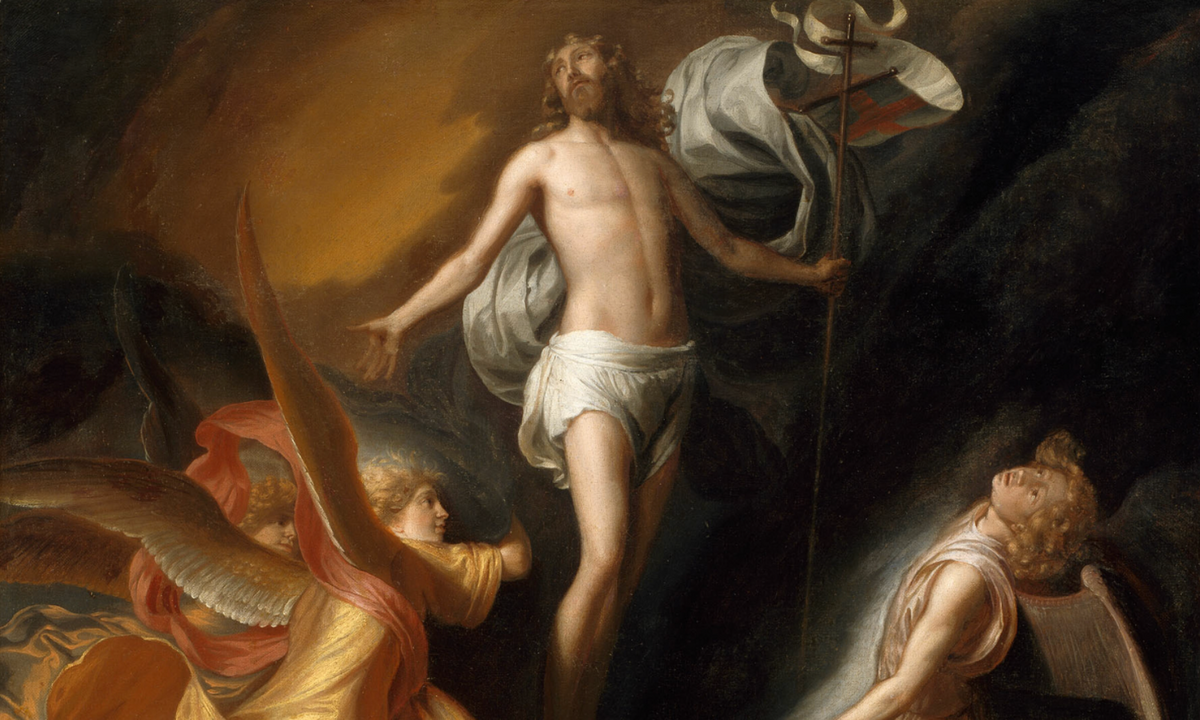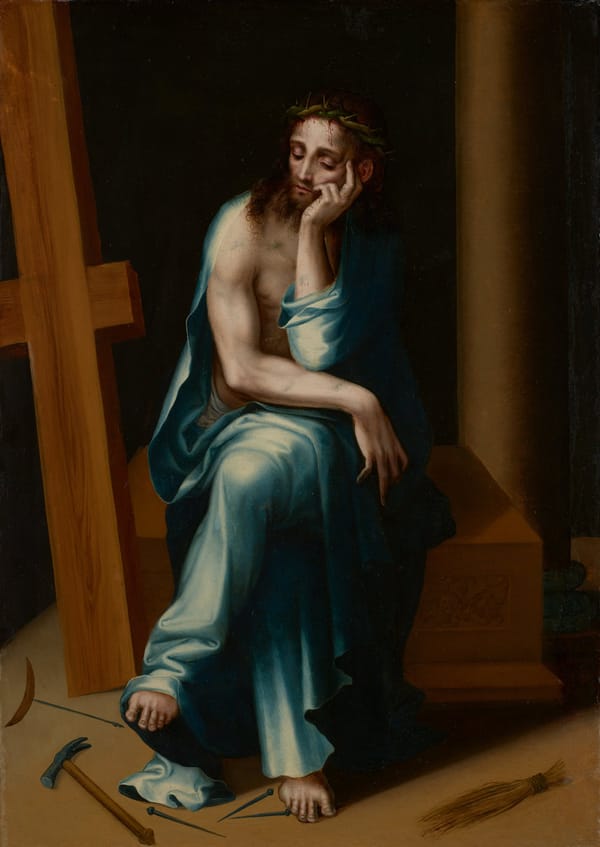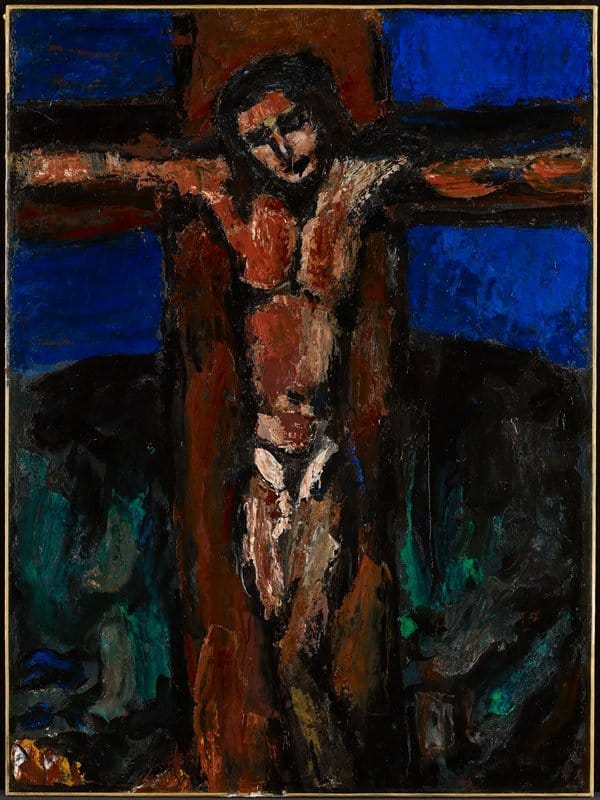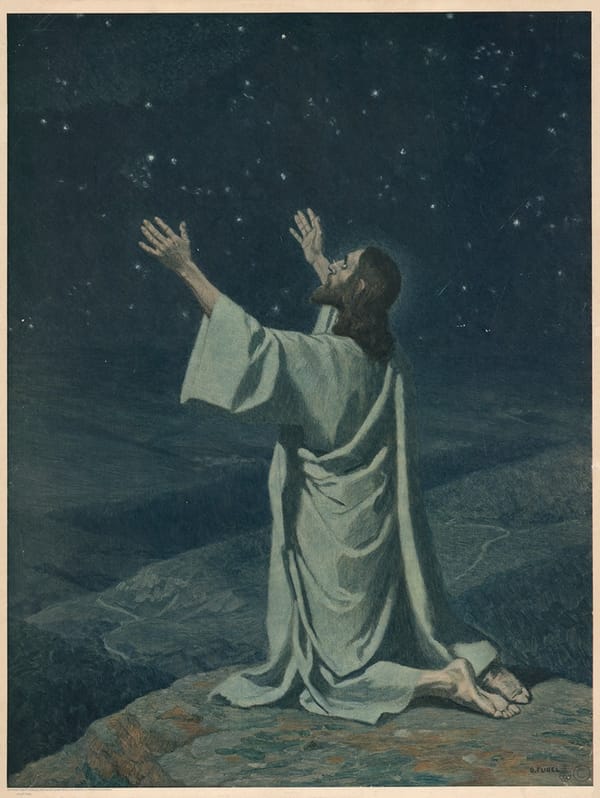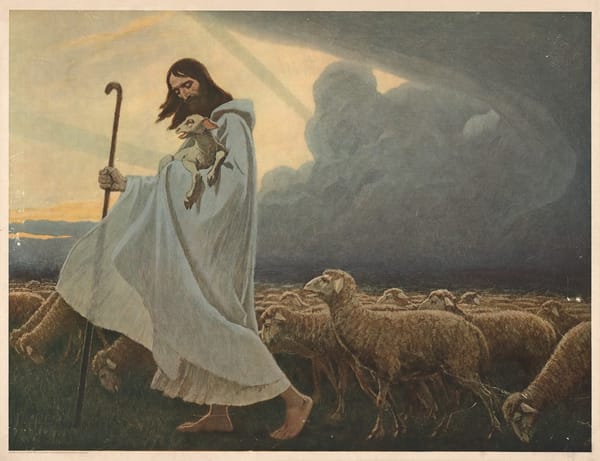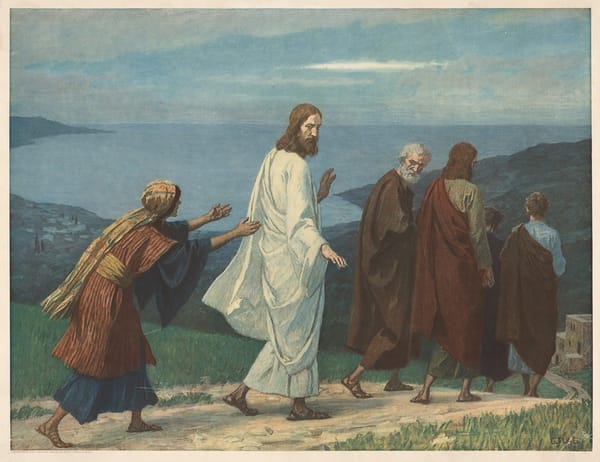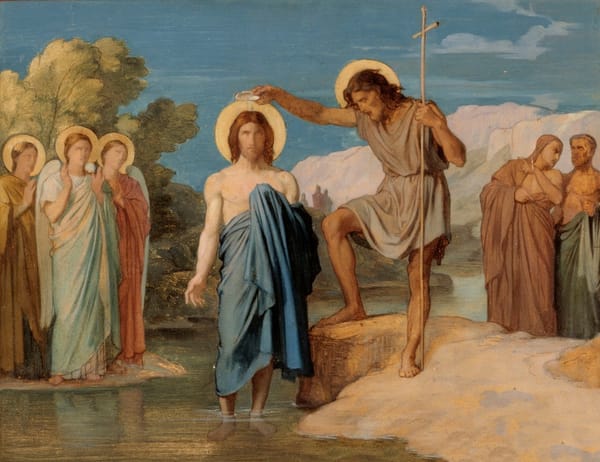About this image
This painting is a good example of the Baroque style which uses contrast, such as the contrast between the soldiers (almost hidden in darkness) and the angels (bathed in the light of Christ and bursting with color). Further details in the bottom of the image reveal a few sleeping soldiers shaded in shadow and bathed in orange hues. A few soldiers on the right side are being roused from their sleep, while two are readying their weapons with surprised looks on their faces. Since the exact moment of the resurrection is not described in great detail in the Bible, artists like van Hoogstraten took liberties with how that scene could have looked.
Although it seems there is a light source shining on Jesus Christ, if you look closely at the angels, it could also be the case that the light source is Jesus. Below His glory there is almost no light and on the angels you can see various angles of light shining onto them. The billowing flag and robes on the angels add dynamism to the image which points the action upward to the sky—another motif of the Baroque era. One can easily feel uplifted with the image when viewing it this way. From Christ down to the angels there is a clear triangular shape to the composition, which is appropriate since triangles commonly represent the trinity. In the bottom right, on the sepulcher stone, you can see the initials SvH, which is an autograph by the artist.
Samuel Dirksz van Hoogstraten trained first with his father Dirk van Hoogstraten and stayed in Dordrecht until about 1640. On the death of his father, he moved to Amsterdam where he entered the workshop of Rembrandt. A short time later, he started out on his own as a master and painter of portraits.
He later made several travels which took him (1651) to Vienna, Rome and London, finally retiring to Dordrecht. There he married in 1656, and held an appointment as provost of the mint.
Free Downloads Below
Hi-Res
1200px
800px
